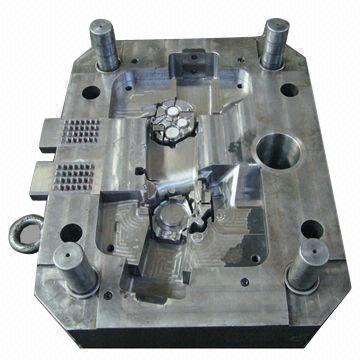1. Implement manufacturing technology and process flow that are proportionate to the manufacturing process
Manufacturing processes that are reasonable have the potential to effectively extend the service life of die-casting molds made of zinc alloy.
1.1 Implement cutting-edge technology for blank metal forging
For 3CrW8V steel, the multi-directional forging and drawing forging process is the one that makes the most sense among the available options. It is able to improve wear resistance and isotropy, contribute to the formation of a reasonable streamline distribution, and distribute carbides in an even manner.5 and 4, and the forging process is repeated anywhere from 4 to 7 cycles. The temperature range for heating is 1130-1160 degrees Celsius.

It is necessary to lessen the hardness and make the cutting process easier in order to achieve the goal of making the forging blank structure evenly die casting mould distributed. When attempting to obtain fine pearlite, it is recommended to use high-temperature annealing, which is a straightforward process.
1.2 Adopt heat treatment specifications that are reasonable
owing to the fact that the die-casting mold for zinc alloy is successful. This is because the temperature of the mold cavity will not go beyond 400 degrees Celsius. As a result, the quenching temperature of 3CrW8V steel is typically chosen to be between 1050 and 1100 degrees Celsius for oil cooling. The tempering temperature is chosen to be between 580 and 580 degrees Celsius. The heat treatment hardness is controlled at HRC44 to 48, which is more suitable for achieving higher thermal fatigue resistance.
Be sure to design die castings with care. Therefore, in order to meet the performance requirements of zinc alloy die castings, it is of utmost importance to enhance the rationality of the process of zinc alloy die castings.
Casting fillets that are suitable should be present in order to prevent edges, cracks, or collapse in the parts of the zinc alloy die-casting mold that correspond to its components.4. As much as possible, narrow and deep cavities, as well as narrow and high ribs, should be avoided on die-casting parts. This is done in order to prevent sharp convexities, grooves, and ridges in the corresponding parts of the zinc alloy die-casting mold. These features will make the conditions for heat dissipation worse, cause unevenness, and cause stress.5. It is recommended that zinc alloy die-casting parts use a larger mold ejection angle within the allowable range. This will help reduce the push-out force or core-pulling force, which will prevent the zinc alloy die-casting mold cavity wall from being scratched during the process of opening the mold, pulling the core, and demoulding the mold.
3. Use, maintenance, and repair that are both reasonable
In addition, the zinc alloy die-casting mold's lifespan can be significantly extended through proper use and maintenance after it has been put into operation.
3.1A preheating temperature that is excessively high will result in a decrease in the yield strength of the surface layer, which will, in turn, result in a reduction in the service life of the zinc alloy die manufacturing mold. The zinc alloy die-casting mold should be preheated at a temperature between 120 and 150 degrees Celsius. It is important that the heating process be slow and consistent during the preheating phase. This will ensure that the inserts and mold bases in the zinc alloy die-casting mold are able to keep up zinc alloy die-casting mold with the changes in temperature. It is also important to begin the preheating process from the center of the mold, which is the area of the mold that experiences the greatest temperature increase during the die-casting process.
3.2 As time goes on, the stress that has built up inside of you continues to grow. Cracks will appear on the surface of the mold when the stress is greater than the material's strength limit, and the mold may even break in some cases. An additional annealing is performed on the new mold after 3,000 to 5,000 injections, followed by another annealing after 10,000 to 15,000 injections, and finally another die casting mould annealing after 30,000 to 40,000 injections. The process of annealing involves three steps: preserving heat for three to five hours, annealing at a low temperature, and cooling the material in the furnace.

3.3 Paint that is reasonable
The service life of zinc alloy die-casting molds can also be improved through the application of coatings in a reasonable manner. When using the spraying method, the thickness of the coating film is consistent and uniform. This not only has the potential to extend the life of the mold, but it also allows for the production of die-casting components that have elevated surface quality. At the moment, coatings made of silica water that have physical and chemical properties that are comparable to those of graphite are widely used both domestically and internationally. Before being used, they ought to be diluted with ten to thirty times the amount of water.
3.4 Repair using the welding repair method following a partial rupture
Continuous argon arc welding can be used to repair the mold in the event that it has a crack that is only partially present. Prior to welding, the area that will be used for welding should be cleaned of any oxides or oil stains. And ought to be preheated in order to lessen the likelihood of cracking the material as a result of high welding temperatures.


